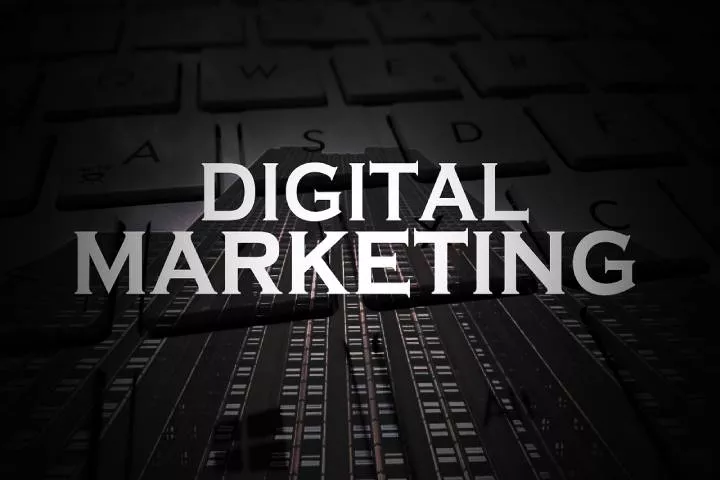Marketplace
How WordPress became the world’s most popular Content Management System
It has become the Content Management System (CMS) of choice for firms and individuals looking to build easily-updatable websites.

WordPress (WP) first launched in 2003, and while its growth might have been slow at the start, in recent years, it has become the Content Management System (CMS) of choice for firms and individuals looking to build easily-updatable websites.
Initially used mainly as an infrastructure for blogging sites, WP now powers around 455 million websites – which roughly equates to about 37% of all areas globally and approximately 65% of all CMS sites.
As the sophistication and scope of WordPress have grown over the years, it has become the de-facto option for web developers looking to build easy-to-update, secure websites for their clients. With its simple, highly customizable interface, backend, and themes, WP has become a titan of online publishing. It is used to power a huge variety of sites – everything from personal blog pages to BBC America and Sony Music.
1. A short history of Content Management Systems
As little as 15 years ago, web developers coded their CMSs from scratch – a lot of the time under the premise they were being developed on an ad hoc basis for individual projects. However, if you spoke to any development firm at the time, they would have conceded that many of their components were reused across jobs.
As these individual file repositories grew, it became apparent that there was a demand for a more structured framework of template files – hence why systems like Drupal, Joomla, and, of course, WordPress came to be.
By using these pre-built CMS templates, designers and developers could spend more time building the bells and whistles that made sites unique rather than thinking about each job’s foundation building blocks. CMSs gave a common framework across websites that led to quicker development processes, more reliable sites, and more secure platforms.

2. Reasons why WordPress became the CMS of choice
WordPress still has many rivals in the CMS marketplace – however, there are some solid reasons why WP stole the crown from other platforms:
WordPress is free: One of the most significant advantages of using WordPress is that the software is provided entirely free of charge. Sure, many themes and plugins come at a price, but the base framework is free.
WordPress is safe: The WP infrastructure is as secure as possible and is constantly updated. However, this does mean that the onus lies with site admins to install updates when prompted. It’s worth noting that, if you lack the technical ability or confidence to make updates yourself, companies now offer website maintenance services and will look after every aspect of your WordPress site’s security.
WordPress is open-source: Undoubtedly, one of the critical reasons WP became so popular among developers was the freedom it offers from a coding point of view by being open-source.
The vast array of WP plugins: As the popularity of WP grew, so developers quickly caught on to the idea that there was a market for building plugins. These days, there is a massive library of plugins that can be installed in seconds, covering almost any need and extending the functionality of WP sites.
WP supports multiple media formats right out of the box: WordPress is pretty much unrivaled in the media format it supports – everything from audio files to video and images.
Business
Navigating the Process of Selling Deceased Estate Shares
This article aims to provide a comprehensive guide to selling shares from a deceased estate. Process of Selling Deceased Estate Shares.

Table of Contents
1. Understanding the Basics of Selling Deceased Estate Shares
Dealing with a deceased estate can be a challenging and emotional process, especially when it comes to handling financial assets like shares. This article aims to provide a comprehensive guide to selling shares from a deceased estate.
2. What are Deceased Estate Shares?
Deceased estate shares refer to the stocks and shares that were owned by an individual who has passed away. These shares become part of the deceased’s estate and are subject to the terms of their will or estate plan.
3. The Importance of Valuing the Shares
The first step in selling deceased estate shares is to obtain a current valuation. This valuation is crucial for several reasons: it helps in distributing the estate among beneficiaries, it may be necessary for tax purposes, and it gives an idea of the market value of the shares.
4. Legal Requirements and Executor Responsibilities
The executor of the estate plays a pivotal role in the management and distribution of the deceased’s assets. This section will cover the legal responsibilities and steps the executor needs to take to lawfully sell the shares.
5. Obtaining Probate
Before any action can be taken with the shares, it’s often necessary to obtain probate. Probate is a legal process that confirms the executor’s authority to deal with the deceased’s assets.
Transferring Shares into the Executor’s Name
Once probate is granted, shares may need to be transferred into the name of the executor. This process varies depending on the company and the type of shares.
6. The Process of Selling Shares
After completing legal formalities, the executor can proceed with selling the shares. This section will outline the steps involved in this process, including choosing a brokerage or financial service, understanding market conditions, and making informed decisions.
Deciding on the Right Time to Sell
Timing can significantly impact the returns from selling shares. Executors need to consider market conditions and financial advice to determine the best time to sell.
Completing the Sale
This subsection will detail the actual process of selling shares, including placing orders, handling transaction fees, and ensuring all regulatory requirements are met.

7. Navigating Tax Implications and Reporting
Managing tax obligations is a critical aspect of selling deceased estate shares. This section will explain the potential tax implications and the importance of accurate reporting for both capital gains tax and inheritance tax considerations.
Understanding Capital Gains Tax Responsibilities
When shares are sold, any profit made from the time of the deceased’s passing to the sale date may be subject to capital gains tax. Executors need to be aware of these implications and plan accordingly.
Inheritance Tax Considerations
In some jurisdictions, the value of the deceased estate’s shares might impact inheritance tax calculations. It’s essential for executors to understand these aspects in order to ensure compliance with tax laws.
8. Common Challenges and How to Overcome Them
Selling deceased estate shares can present unique challenges. This section will discuss common issues such as disputed wills, fragmented information about the shares, and market volatility.
Dealing with Disputed Wills and Beneficiary Disagreements
Disputes over the will or disagreements among beneficiaries can complicate the process. Executors must handle these situations delicately and legally.
Managing Market Volatility
Shares can be subject to market fluctuations. Executors should be prepared for this volatility and may need to consult financial advisors to navigate these waters effectively.
9. Tips for Executors Handling Deceased Estate Shares
This section will provide practical advice for executors, including the importance of seeking professional advice, keeping thorough records, and communicating clearly with beneficiaries.
Seeking Professional Financial and Legal Advice
The complexity of selling shares from a deceased estate often necessitates professional advice. This can range from legal counsel to financial advisory services.
Record Keeping and Communication with Beneficiaries
Maintaining transparent and thorough records is crucial. Executors should also prioritize clear and consistent communication with all beneficiaries to avoid misunderstandings.
Conclusion
Selling shares from a deceased estate is a responsibility that requires careful attention to legal, financial, and interpersonal dynamics. By understanding the process, staying informed about tax obligations, and tackling challenges head-on, executors can fulfill their duties effectively and respectfully.

 Instagram3 years ago
Instagram3 years agoBuy IG likes and buy organic Instagram followers: where to buy them and how?

 Instagram3 years ago
Instagram3 years ago100% Genuine Instagram Followers & Likes with Guaranteed Tool

 Business5 years ago
Business5 years ago7 Must Have Digital Marketing Tools For Your Small Businesses

 Instagram4 years ago
Instagram4 years agoInstagram Followers And Likes – Online Social Media Platform





















